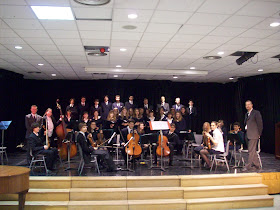On hearing my friend triumph in a Mozart flute concerto ….
Q: What is the Coca Cola reason for being a non-pro musical performer?
A: Obvious isn´t it? It´s the desire to get other people tapping their feet .. as in I want to teach the world to sing
That was one of the reasons I put forward about what motivates people (myself included) to dedicate time and energy to perform in public without an economic incentive. Yes, I know a simpler way of saying it is to use the expression amateur music making. Unfortunately the term amateur musician has taken on pejorative connotations, so I’m using the longer description.
Among the groups I have most enjoyed hearing over the years there are many which perform without an economic incentive, not least the admirable Eclectic Voices who I heard in concert at Union Chapel in London, directed by the wonderful Scott Stroman .
The stress level involved in performing as part of a group, even in the most challenging repertoire and in the most famous venue, is cushioned by the support and companionship of fellow musicians. So much so that it is not hard to see how singing in a choir or playing in an orchestra can be a pleasurable experience.
I can see too that playing pop or jazz music has its lighter side and the informality of the scene often means that even playing solo can be a relaxed experience. After all, didn’t the great Miles Davis say that in jazz there are “no wrong notes”. Yes, you got me, he didn’t really mean you can be a rubbish player, but you know what I mean, in a pub full of drunks and smoke of all varieties, an odd note here or there is not the end of the world. Talking of Miles Davis, and his experience of being obliged to use electric keyboards in large stadia, the great Keith Jarrett said that electric instruments are like toys, all you can do is play with them….
So, where was I? Yes, in a classical orchestra concert of players from many nations and who follow many professions or none, where my friend was soloist in a Mozart concerto for Flute & Harp. So, why does a successful professional person, whose work does not involve her directly in performing on stage, place herself in this hugely stressful situation? Not only was there an audience of strangers lost in the dark of the theatre, but there they were, in the front row, my friend´s work colleagues from her office, right up to the big boss. Since they already know and like her and respect her professional ability, there is nothing for her to prove, only the the awful prospect that a bucket full of nerves could lead to her turning in a dire performance.
Needless to say the nerves were kept under control and the performances was totally enjoyable and deserved the prolonged applause which followed. Then came the answer. We don´t do this for the applause, we don´t do this for the conductor´s pat on the back, we don´t do this because we need friends and colleagues to like or respect us more…..
In the end the real reason for putting oneself in this stressful and challenging situation is for one´s own personal satisfaction, to become a more fulfilled person.
As my friend said to me backstage:






